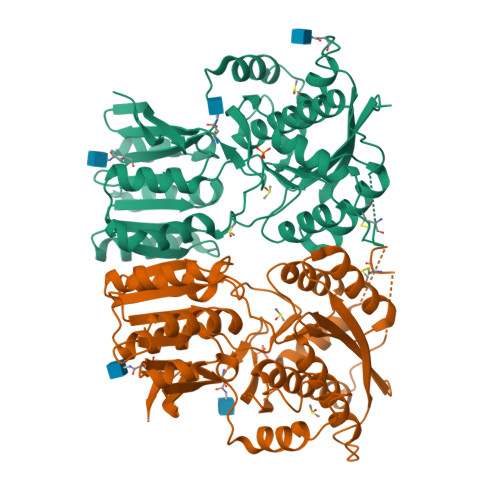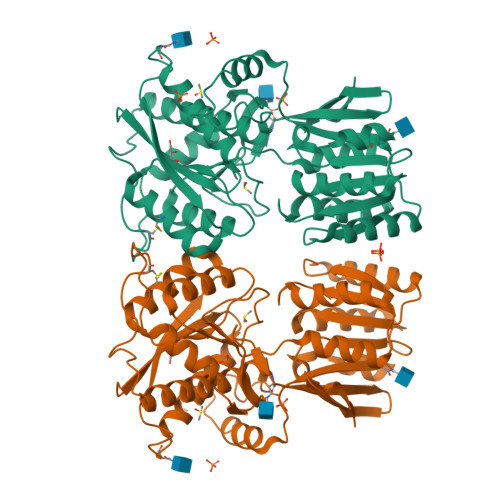Druggability Simulations and X-Ray Crystallography Reveal a Ligand-Binding Site in the GluA3 AMPA Receptor N-Terminal Domain.
Lee, J.Y., Krieger, J., Herguedas, B., Garcia-Nafria, J., Dutta, A., Shaikh, S.A., Greger, I.H., Bahar, I.(2019) Structure 27: 241-252.e3
- PubMed: 30528594
- DOI: https://doi.org/10.1016/j.str.2018.10.017
- Primary Citation of Related Structures:
6FLR, 6FPJ - PubMed Abstract:
Ionotropic glutamate receptors (iGluRs) mediate the majority of excitatory neurotransmission in the brain. Their dysfunction is implicated in many neurological disorders, rendering iGluRs potential drug targets. Here, we performed a systematic analysis of the druggability of two major iGluR subfamilies, using molecular dynamics simulations in the presence of drug-like molecules. We demonstrate the applicability of druggability simulations by faithfully identifying known agonist and modulator sites on AMPA receptors (AMPARs) and NMDA receptors. Simulations produced the expected allosteric changes of the AMPAR ligand-binding domain in response to agonist. We also identified a novel ligand-binding site specific to the GluA3 AMPAR N-terminal domain (NTD), resulting from its unique conformational flexibility that we explored further with crystal structures trapped in vastly different states. In addition to providing an in-depth analysis into iGluR NTD dynamics, our approach identifies druggable sites and permits the determination of pharmacophoric features toward novel iGluR modulators.
Organizational Affiliation:
Department of Computational and Systems Biology, School of Medicine, University of Pittsburgh, 3501 Fifth Avenue, Suite 3064 BST3, Pittsburgh, PA 15260, USA.





















